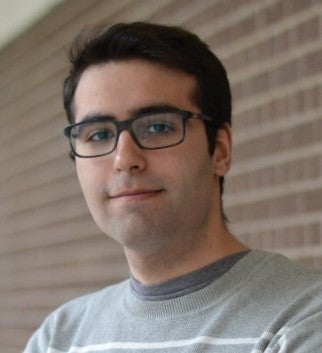The NSERC Chair group will attend the 2021 Ontario’s Water Conference & Trade Show (https://pheedloop.com/owwa20/site/home), which is organized by OWWA and will be held virtually from April 19th to May 5th. Chair members will deliver four oral presentations at this conference. See below for titles and short abstracts of the presentations:
University Research Session
Removal of Microcystin-LR in drinking water using super-fine powered activate carbon

Sina Golchi (MASc Candidate)
The objectives of this research are to produce super‐fine powdered activated carbon (SPAC) from commercially available powdered activated carbon (PAC), to establish the performance of SPACs with respect to the removal of microcystin‐LR from ultra‐pure and surface water and to test removal of SPAC by coagulation. This presentation will compare the performance of SPAC to the performance of the original PACs in terms of kinetics and capacities/isotherms for microcystin‐LR in ultrapure and surface water. Preliminary coagulation results on the removal of SPAC will also be presented.
Distribution Session
Investigating the Impact of Natural Organic Matter on Lead Corrosion in Southern Ontario Drinking Water

Patrick King (MASc in Civil Engineering Graduate)
S. Peldszus, B. Trueman, K. Aghasadeghi, G. Gagnon, P.M. Huck
This study investigated the impacts of natural organic matter (NOM) on lead release under galvanic corrosion conditions using natural and synthetic waters typical for Southern Ontario. The research was conducted using a dump and fill protocol, and both total and dissolved lead were monitored throughout the 21 week study. This presentation will provide the water industry with a greater understanding into how NOM can impact lead release, thereby informing treatment decision making and its downstream impact on corrosion.
A pilot study comparing sodium silicates to orthophosphate and pH adjustment for lead corrosion control

Kimia Aghasadeghi (Water Treatment Researcher)
S. Peldszus, B. Trueman, A. Mishrra, M. Cooke, S. Sherlock, R. Slawson, D. Giammar, G. Gagnon, P.M. Huck
A pilot-scale study using an excavated lead service line (LSL) fed with water from a Great Lakes source was undertaken to compare sodium silicate treatment to orthophosphate and pH adjustment; to distinguish between a pH effect vs a passivating layer effect for the silicate corrosion inhibitor; and to determine the nature of silica accumulation in the pipe scale. Total lead and dissolved lead concentrations where monitored throughout the study, while scale analysis and biofilm accumulation analysis were done at the end of the study. This talk will give a comprehensive overview of the results and main findings.
Emerging Issues Session
Beyond TOC – Characterizing Algal/Cyanobacterial Organic Matter and Assessing Its Implications for Treatment

Peter M. Huck, Ph.D. (Professor and NSERC Chairholder)
F.L. Hellweger, J.S. Hoffmann, S. Golchi, S. Peldszus
The authors have examined the literature relating to algal organic matter (AOM) that is relevant from a drinking water perspective. Studies comprise laboratory batch experiments using algal/cyanobacterial cultures involving one or more species, and long-term investigations, including algal activity, in both freshwater and oceans. Key results from this literature on AOM will be discussed with respect to key drinking water treatment processes; research gaps, and study needs going forward will also be presented.